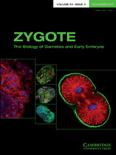
ZYGOTE
Scope & Guideline
Fostering Collaboration in Biological Research.
Introduction
Aims and Scopes
- Reproductive Biology and Embryology:
ZYGOTE focuses on the processes of reproduction, including gamete formation, fertilization, and embryonic development across various species, highlighting both fundamental biological mechanisms and applied aspects. - Assisted Reproductive Technologies (ART):
The journal publishes research on various ART techniques such as in vitro fertilization (IVF), intracytoplasmic sperm injection (ICSI), and embryo cryopreservation, emphasizing advancements and clinical outcomes. - Epigenetics and Developmental Biology:
Research exploring the role of epigenetic modifications in gamete quality, embryo development, and fertility is central to the journal, providing insights into how environmental factors and genetic background can influence reproductive success. - Comparative Studies Across Species:
ZYGOTE includes comparative studies that investigate reproductive processes in different species, from mammals to fish, providing a broader understanding of reproductive strategies and mechanisms. - Innovative Methodologies:
The journal highlights the development and application of innovative methodologies, such as time-lapse imaging, microfluidics, and advanced molecular techniques, contributing to improved research outcomes in reproductive sciences.
Trending and Emerging
- Molecular and Genetic Mechanisms in Reproduction:
There is an increasing focus on understanding the molecular and genetic underpinnings of reproduction, including gene expression studies and the role of non-coding RNAs in gamete and embryo development. - Impact of Environmental and Lifestyle Factors on Reproductive Health:
Recent studies are increasingly exploring how external factors, such as pollutants, stress, and dietary components, influence reproductive outcomes, emphasizing the need for a holistic understanding of fertility. - Technological Innovations in ART:
Research on new technologies and methodologies in assisted reproduction, such as advanced cryopreservation techniques and embryo selection algorithms, is on the rise, reflecting the demand for improved clinical practices. - Epigenetic Influences on Fertility:
Emerging studies are highlighting the significant role of epigenetic modifications in reproduction, particularly how they affect gamete quality and embryo viability, marking a shift towards a more integrative view of fertility. - Cross-Species Applications of Reproductive Technologies:
There is a growing trend towards applying reproductive technologies developed for one species to other species, demonstrating the versatility and potential for broader applications in agriculture and conservation.
Declining or Waning
- Traditional Embryo Morphology Studies:
There has been a noticeable decrease in studies focusing solely on morphological assessments of embryos, as newer techniques and metrics, such as morphokinetics, gain traction in predicting developmental outcomes. - Basic Animal Breeding Studies:
Research centered on conventional breeding practices without the integration of modern reproductive technologies or genetic assessments appears to be waning, indicating a shift towards more innovative and technology-driven approaches. - Environmental Impact Studies on Reproduction:
While environmental influences on reproduction were historically a significant focus, recent publications suggest a decline in this area, possibly due to a broader emphasis on molecular and genetic factors. - Single-Species Focused Studies:
Research that concentrates exclusively on a single species, particularly in non-model organisms, is becoming less common as comparative and cross-species studies are increasingly favored for their broader applicability. - Nutritional Studies on Gamete Quality:
Investigations into the effects of basic nutritional interventions on gamete quality are less frequently published, likely due to a shift towards more complex interactions, including genetic and epigenetic factors.
Similar Journals
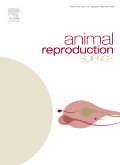
ANIMAL REPRODUCTION SCIENCE
Unveiling the Secrets of Animal DevelopmentANIMAL REPRODUCTION SCIENCE, published by Elsevier, is a leading journal dedicated to the field of animal reproduction and developmental biology. With an ISSN of 0378-4320 and an E-ISSN of 1873-2232, it serves as a vital resource for researchers, professionals, and students interested in advancing their understanding of reproductive mechanisms across various species. The journal has been recognized for its high-quality contributions, achieving a Q1 ranking in Animal Science and Zoology and showcasing its significant impact in the areas of Endocrinology and Veterinary Medicine as per the 2023 category quartiles. Covering a wide range of topics from reproductive physiology to genetic implications, this journal not only highlights innovative research but also fosters interdisciplinary dialogue in the rapidly evolving world of animal science. Though not currently offering open access, it remains a crucial platform for disseminating pivotal research findings from across the globe. With its rich history dating back to 1936, ANIMAL REPRODUCTION SCIENCE continues to drive excellence in animal reproduction studies, positioning itself at the forefront of the field, and solidifying its relevance in both science and industry.
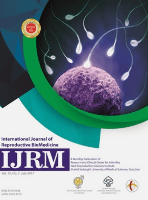
International Journal of Reproductive Biomedicine
Transforming research into practice in reproductive health.The International Journal of Reproductive Biomedicine, an esteemed publication by SHAHID SADOUGHI UNIVERSITY OF MEDICAL SCIENCES, serves as a pivotal platform in the fields of obstetrics and gynecology as well as reproductive medicine. Established in 2011 and transitioning to an open access model in 2015, this journal facilitates the dissemination of innovative research and critical findings to a global audience, particularly focusing on advancements in reproductive health and biomedicine. With an impact factor reflective of its commitment to high-quality scientific inquiry, the journal has achieved a notable ranking of Q3 in both its categories for 2023, contributing to its growing influence within the academic community. Researchers and professionals benefit from its broad scope, which encompasses a range of topics essential to reproductive health, thus fostering a rich exchange of knowledge. The journal's accessibility allows students and professionals alike to engage with the latest findings and contribute to ongoing discussions within this vital field of study.

THERIOGENOLOGY
Pioneering knowledge in veterinary reproduction since 1974.THERIOGENOLOGY is a prestigious academic journal published by Elsevier Science Inc, dedicated to the field of veterinary reproduction and animal science. With an impressive impact factor and recognized as a Q1 journal in various categories including Animal Science and Zoology, Equine, Food Animals, and Small Animals, THERIOGENOLOGY has established itself as a vital resource for researchers, practitioners, and students alike. Founded in 1974, the journal covers a broad spectrum of topics related to reproductive physiology, biotechnology, and the health management of food and companion animals. Although it does not currently offer open access, researchers can benefit from its comprehensive articles and reviews that push the boundaries of knowledge in veterinary science. With a significant placement in the Scopus rankings, ranking #1 in multiple veterinary categories, THERIOGENOLOGY serves as an essential platform for advancing the understanding of reproductive strategies and practices, thereby contributing directly to the fields of animal husbandry and veterinary medicine.

Reproductive Medicine and Biology
Pioneering research for a healthier tomorrow.Reproductive Medicine and Biology, an esteemed journal published by WILEY, stands at the forefront of advancements in the field of reproductive health and associated biological sciences. With an impact factor that underscores its relevance—ranking in Q1 for Reproductive Medicine and Q3 in Cell Biology—this journal is distinguished by its commitment to disseminating high-quality, peer-reviewed research since its transition to Open Access in 2002. Based in Japan, the journal caters to a global audience, providing vital insights into reproductive biology, therapeutics, and innovative practices. With Scopus rankings placing it at #22 out of 90 in Reproductive Medicine and a commendable percentile ranking, Reproductive Medicine and Biology aims to foster dialogue and knowledge transfer among researchers, professionals, and students, paving the way for breakthroughs in understanding reproductive health.
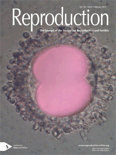
REPRODUCTION
Fostering collaboration in the realm of reproductive sciences.REPRODUCTION, published by BIOSCIENTIFICA LTD, stands at the forefront of research in the fields of reproductive and developmental biology. With a focus on advancing our understanding of reproductive health and mechanisms, the journal has garnered an impressive reputation, consistently ranking in the first quartile for key categories including Embryology, Endocrinology, Obstetrics and Gynecology, and Reproductive Medicine in 2023. Notably, it holds an esteemed position in the Scopus rankings, with high percentiles that reflect its significant impact in the scientific community. The journal is committed to open access, promoting the broad dissemination of high-quality research to facilitate innovative discoveries and interdisciplinary collaboration. Situated in the United Kingdom, REPRODUCTION serves as a vital resource for researchers, professionals, and students eager to contribute to the evolving landscape of reproductive sciences and related fields.
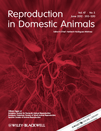
REPRODUCTION IN DOMESTIC ANIMALS
Fostering Knowledge for a Healthier Animal FutureREPRODUCTION IN DOMESTIC ANIMALS is a distinguished peer-reviewed journal published by Wiley that has been at the forefront of advancing knowledge in the field of animal science since its inception in 1966. With an ISSN of 0936-6768 and an E-ISSN of 1439-0531, this journal specializes in the intricate aspects of reproductive biology in domestic species, supporting both scientific research and practical applications in agriculture. Ranked Q2 in Animal Science and Zoology and Q3 in both Biotechnology and Endocrinology, the journal plays a crucial role in addressing contemporary challenges in animal reproduction, contributing significant insights to researchers, professionals, and students alike. Although it does not currently offer open access, its editorial team is committed to publishing high-quality studies that enhance our understanding of reproductive mechanisms and foster advancements in the field. The convergence of data, innovative methodologies, and practical implications in the journal fosters a rich dialogue among scientists and practitioners worldwide, making it an essential resource for anyone invested in animal reproductive health.
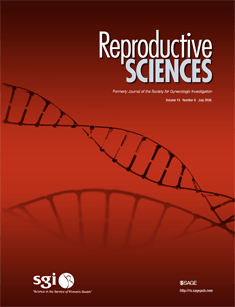
Reproductive Sciences
Advancing Knowledge in Reproductive HealthReproductive Sciences is a premier journal published by SPRINGER HEIDELBERG, dedicated to the field of obstetrics and gynecology. With its ISSN 1933-7191 and E-ISSN 1933-7205, the journal has established itself as a leading source of high-quality research and clinical insights since its inception in 2007, and continues to converge its scope into 2024. Currently ranked in the Q1 category for obstetrics and gynecology, it holds the 43rd position among 209 journals in the Scopus rankings, underscoring its influence and relevance within the medical community. This journal is particularly dedicated to advancing knowledge in reproductive health, providing a platform for innovative research and clinical practices through both traditional and open access options. Located in Switzerland with an address in Heidelberg, Germany, Reproductive Sciences is not just a publication; it is a vital resource for researchers, professionals, and students seeking to make impactful contributions to the field of reproductive health.
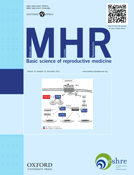
MOLECULAR HUMAN REPRODUCTION
Shaping the Future of Reproductive Biology with Cutting-edge StudiesMOLECULAR HUMAN REPRODUCTION, published by Oxford University Press, is a pivotal journal dedicated to advancing the field of reproductive biology. Since its inception in 1995, the journal has been recognized for its rigorous peer-reviewed research and substantial contributions to the understanding of molecular mechanisms underlying human reproduction. With an impressive impact factor and ranked within the top tiers (Q1 and Q2) across diverse categories including Embryology, Obstetrics and Gynecology, and Reproductive Medicine, it stands as an essential resource for researchers, healthcare professionals, and students alike. The journal aims to publish cutting-edge research that explores the complexities of human reproduction at the molecular and cellular levels, fostering a deeper understanding that can be translated into clinical practice. Although it currently operates under a subscription model, the valuable insights and groundbreaking findings featured within its pages continue to influence the trajectory of reproductive health research globally. Located in the heart of Oxford, United Kingdom, the journal remains committed to addressing vital challenges in the field and promoting innovative scientific dialogue.

Reproductive Biology and Endocrinology
Pioneering Insights in Reproductive and Endocrine HealthReproductive Biology and Endocrinology, published by BMC, is a distinguished open-access journal established in 2003, catering to researchers and professionals in the interdisciplinary fields of reproductive biology, endocrinology, and related biomedical sciences. With a notable impact in 2023, the journal has achieved Q1 rankings in Obstetrics and Gynecology, Reproductive Medicine, and Endocrinology, alongside a Q2 ranking in Developmental Biology, establishing itself as a pivotal source of high-quality research and insights. The journal's commitment to freely accessible research promotes knowledge dissemination across its domains, which is crucial for advancing understanding of reproductive health and endocrine mechanisms. With a robust Scopus ranking showcasing its relevance—17th out of 209 in Obstetrics and Gynecology, and 8th out of 90 in Reproductive Medicine—it serves as an essential resource for academics and clinicians alike, facilitating innovative research and fostering collaboration within the global scientific community.

Andrology
Fostering excellence in reproductive health research and education.Andrology, an esteemed journal published by WILEY, is dedicated to advancing the field of reproductive health and medicine. With an ISSN of 2047-2919, this journal spans critical topics in andrology, urology, and endocrinology, reflecting its strong commitment to scholarly excellence and innovation. As a Q1 ranked journal in both Reproductive Medicine and Urology, Andrology boasts impressive Scopus rankings, standing at 6th in Reproductive Medicine and 8th in Urology, placing it in the top 10% of its field. The journal is accessible as an Open Access platform, ensuring that valuable research findings are available to a broader audience. With significant impact evidenced by its categorization in Q2 for Endocrinology and Diabetes and Metabolism, Andrology serves as an essential resource for researchers, clinicians, and students alike, supporting the continued advancement of knowledge and practice in male reproductive health.